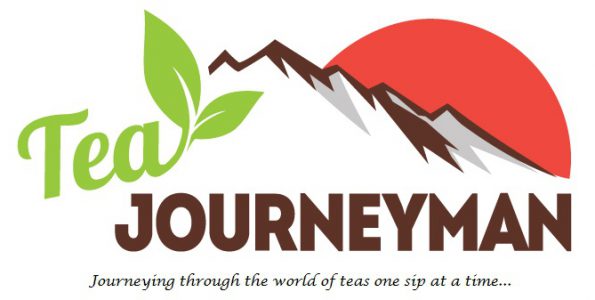It was one of those days, today. The kind of day where the phone rang so often that preparing a pot of tea, let alone enjoying it, was not about to happen. I do not get those days very often, which is one of the benefits of making sure that my work is completed two weeks ahead of schedule. However, occassionally, it seems that today was the day when an unusually large percentage of clients out of the 1,400 that I manage decided to call with questions and concerns. I cannot be upset about that. After all, I do get paid to do that work. I would be lying if I said that I was not anxiously waiting all day to find that half hour or so to sit and enjoy some tea. The fact that I had received four teas from Myanmar and a package of three different blends in the past twenty-four hours was not helping my anxiety.
Regardless, here I am. It is 6:30 PM. My son did not take his nap at his grandmother’s house today, so he is sleeping already. My house is quiet again, and with the darkness taking over outside, there is nothing that I can be doing that I am not. Now, finally, is a perfect time to prepare and enjoy my elixir.
After a long, mentally exhausting day, I need a tea that is going to get my energy balanced again. I did not have the chance to drink much liquid today, so a refreshing, hydrating tea is definitely the prescription. Refreshment, hydration, and an uplifting effect … sounds like tonight calls for a high quality Japanese green tea.
Only the best quality out of my remaining samples of Japanese green tea will do, that being the Kabuse Sencha (no Gyokuro in this package, unfortunately). This sample was provided by the great people at Kyoto Obubu Tea Farms. Please check out their website here.
This Kabuse Sencha is produced using the leaves of the Yabukita cultivar. The tea bushes that are destined to produce Kabuse Sencha are covered to block out 85% of sunlight for about two weeks before the leaves are harvested, allowing the leaves to develop higher concentrations of amino acids. After harvesting, the leaves are lightly steamed, dried, and ready for shipping. This is obviously an oversimplification of the entire process of producing this tea, but you get the idea.
The packet has been opened, and the fresh, dark forest green appearance of these leaves is already making me feel better. Let the journey begin…

The dry leaves have a fresh, dark forest green color, with the stems and veins displaying a bright green color. The leaves have a slight glimmer effect to them. The leaves are rolled, medium sized fragments. There are no whole leaves in the mix, as expected. There are no bare stems or twigs. The aroma is sweet, with scents of fresh cut grass, sweet hay, and a touch of light brown sugar.
Five grams of leaves were placed in a 9.4 ounce (280 ml) Tokoname teapot. Filtered tap water was heated to 160ºF (70ºC). The leaves were infused for one minute.
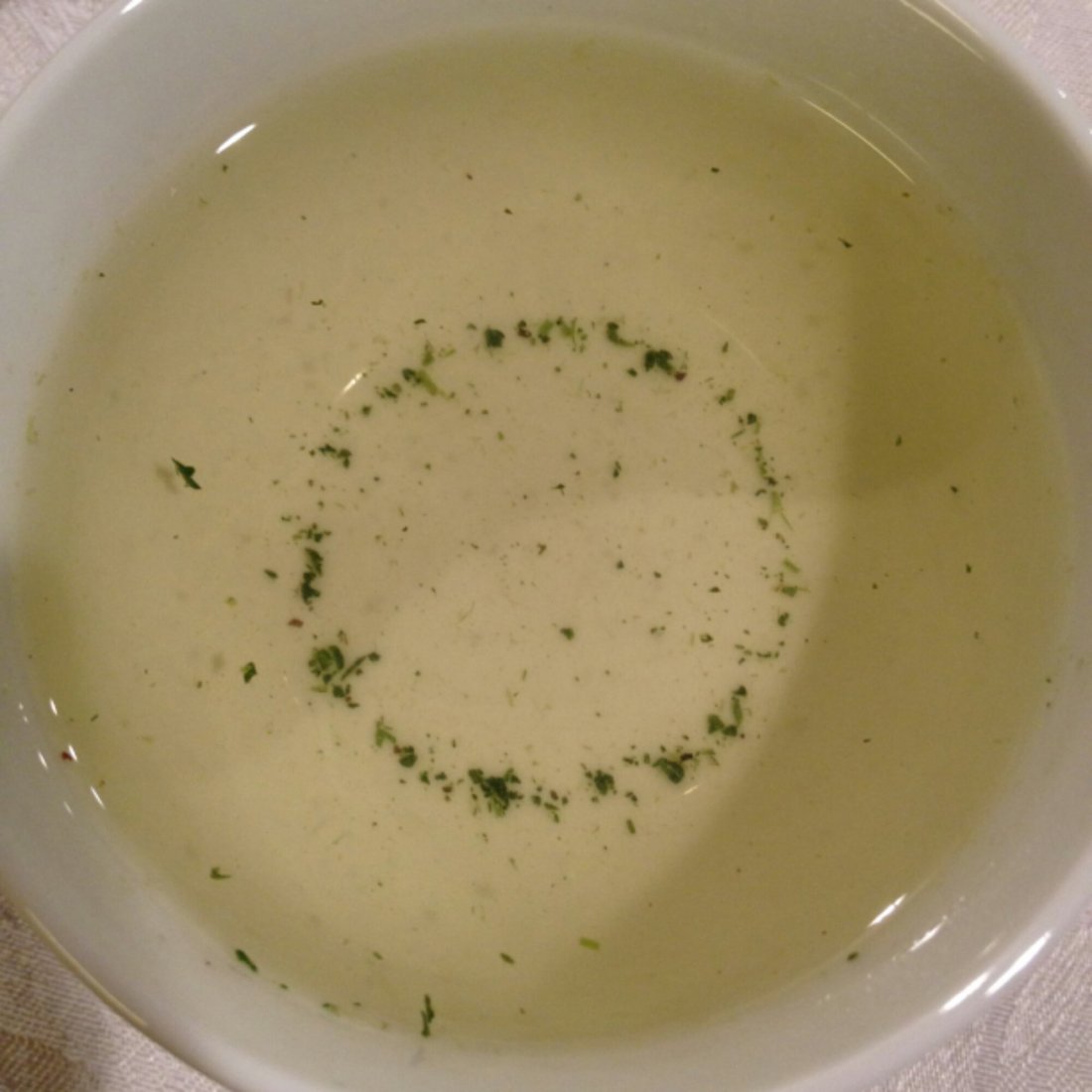
The first infusion produced a liquor with light, pale jade color. There was a very slight haze to the liquid, but still transparent. The aroma is fresh, with scents of fresh cut grass, cooked leafy vegetables, and sea mist. The body is light-medium, with a smooth, syrupy texture. The taste has the classic savory (umami) character, with notes of fresh cut grass, cooked leafy vegetables, sea mist, and a light sweetness. The aftertaste is brisk and grassy, with a flowery essence left on the breath.
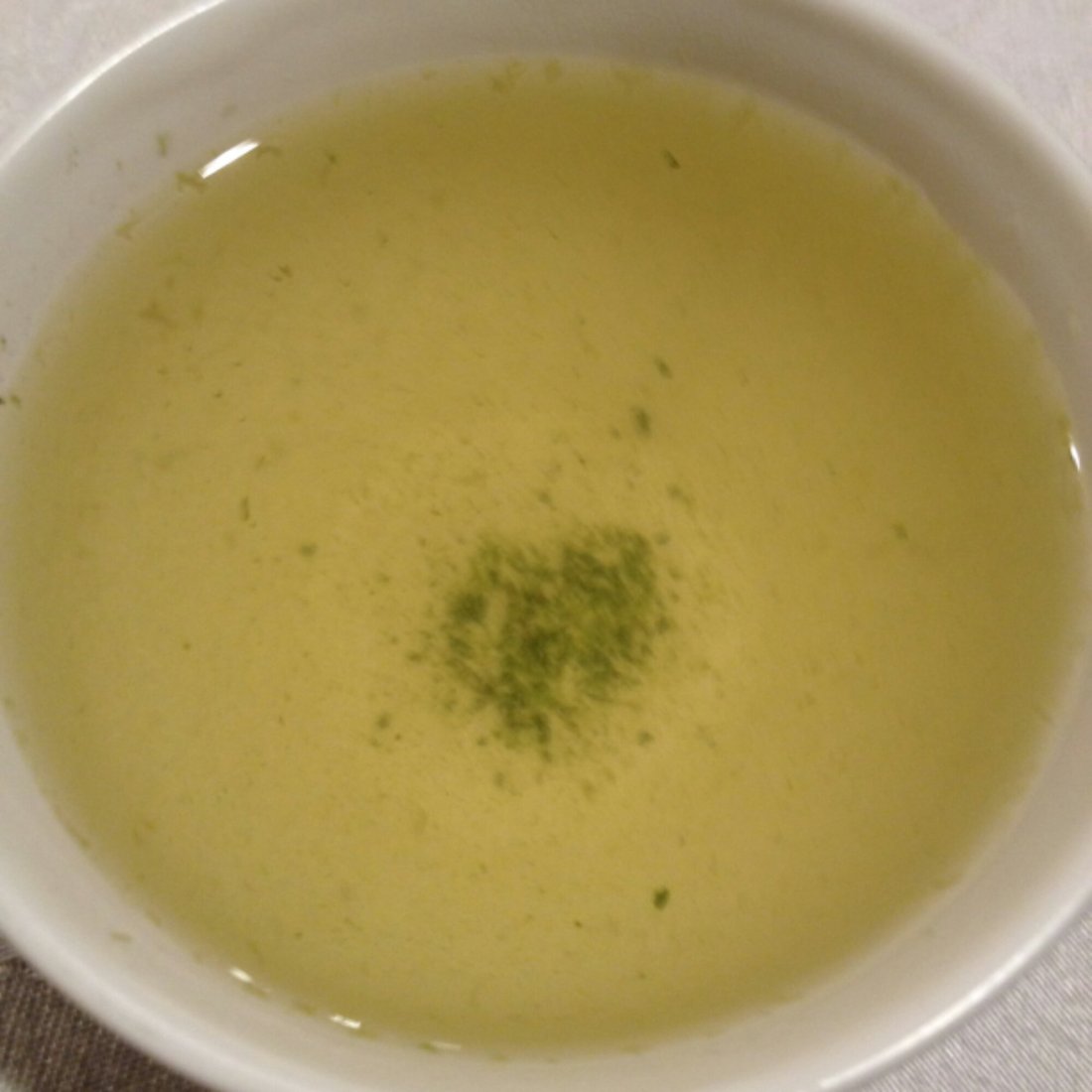
The second infusion produced a liquor with a darker shade of pale jade green-yellow color. The aroma remains fresh, with scents of fresh cut grass and sea mist. The body and texture remain the same. The savory character has lightened some, and the sweetness has changed to a more vegetal taste. The notes of fresh cut grass and sea mist are most dominant. The aftertaste remains brisk and grassy, with a flowery essence.
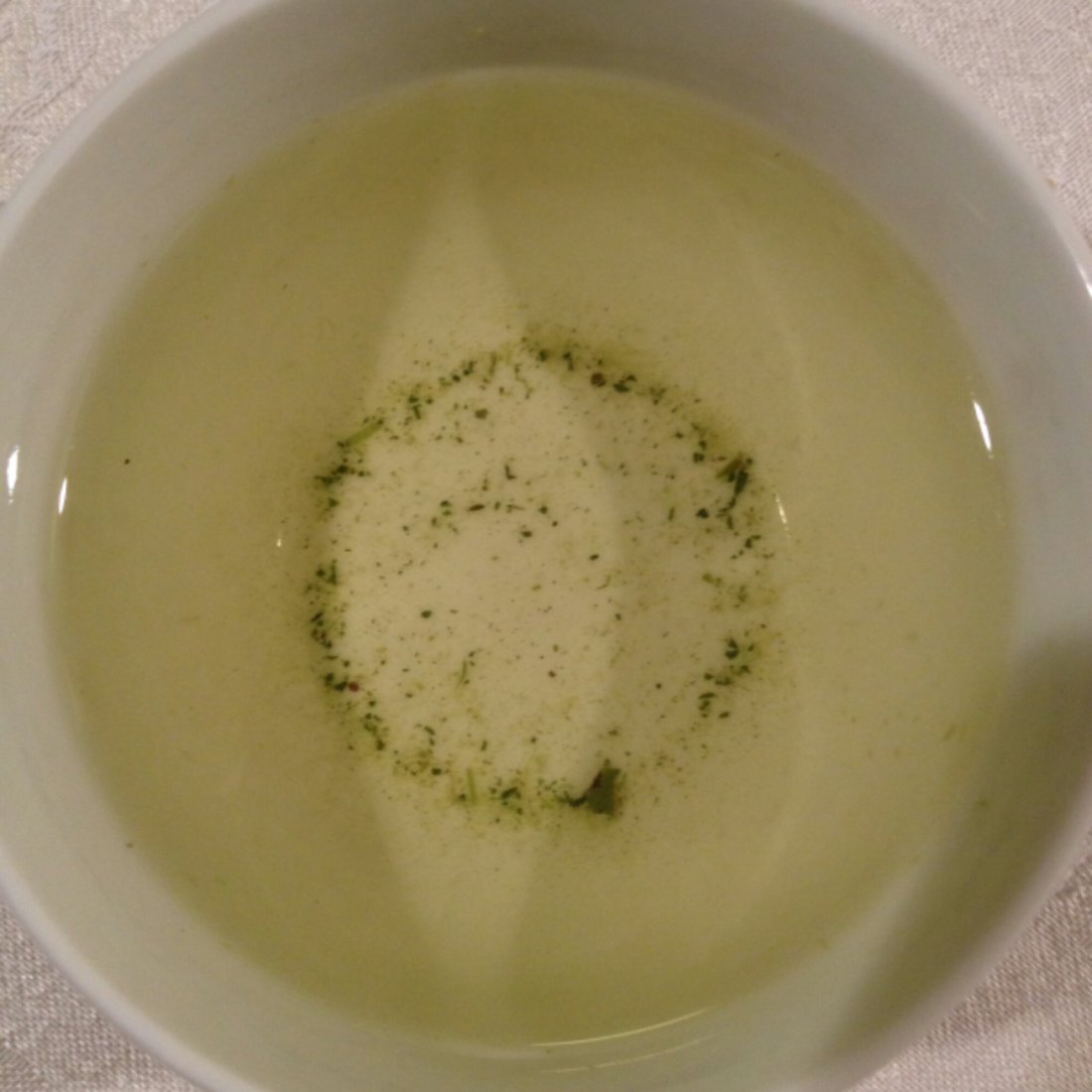
The third infusion produced a liquor with a light color than the second infusion, but slightly darker than the first infusion. The aroma remains grassy, misty, and fresh. The body has lightened some. The taste remains grassy and misty, but still quite tasteful. Although lighter in all aspects, the third infusion is very enjoyable and refreshing.
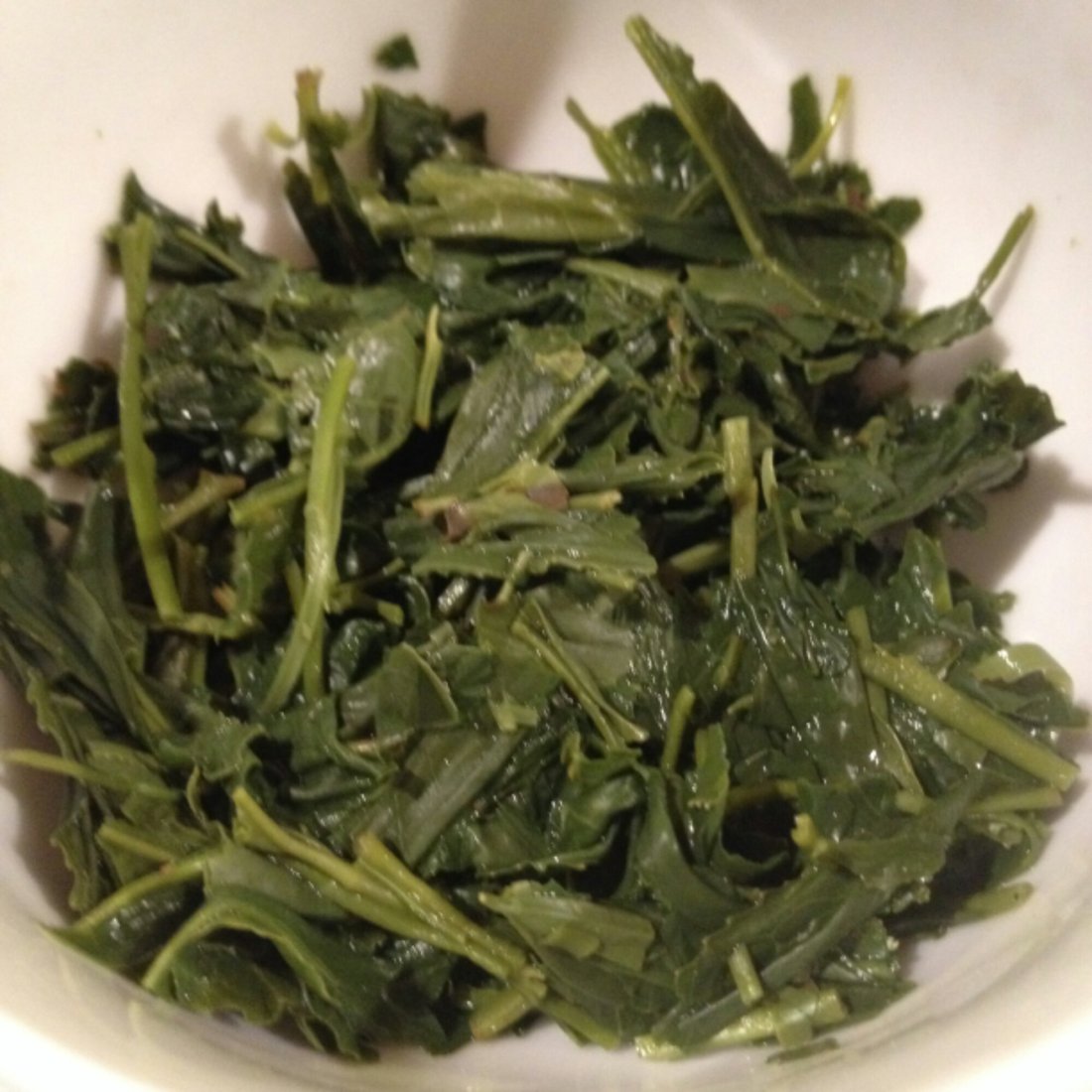
The infused leaves have a fresh off the bush dark forest green color to them. The stems and veins have a slightly lighter green color. All leaves are medium fragments. There are no bare stems or twigs. The leaves are very soft and delicate. The aroma has scents of wet fresh cut grass and sea mist.
This Kabuse Sencha from Kyoto Obubu Tea Farms was the perfect tea to study tonight. It provided me with all of the benefits that I was looking for in a tea. It was refreshing, hydrating, and uplifting. Although I admit that Japanese sencha and other lightly steamed green teas are not always my preferred products, there is an energy specific to Japanese and Korean steamed green teas that I have not found in other green teas. Perhaps it is the effect of the higher amino acid content, higher caffeine, etc. Or perhaps the love and reverence that these two cultures have for their teas can be felt in the infused leaves. Either way, I am always left pondering after a review of a Japanese or Korean green tea as to why I do not drink them more often.
Thank you again to Kyoto Obubu Tea Farms for providing another excellent sample. Cheers!
Thank you for taking your time to read this review. Please leave a comment and start a discussion.
